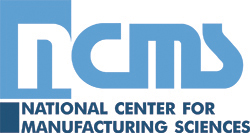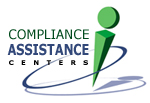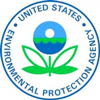Historical Articles
June, 1953 issue of Plating
SOME EXPERIENCES IN PLATING ON NICKEL SILVER
George Schore, Technical Sales Representative, Frederick Gumm Chemical Company, Kearny, N.J.
INTRODUCTION
In the manufacture of metal pen parts, designers requested the use of nickel silver, and also specified a bright plated finish for added eye appeal. It was found that, although a chromium finish was adequate, a brighter looking finish was obtained by using bright nickel plus chromium or bright nickel plus rhodium. This paper has been written to outline a series of practical and technical considerations that were followed in solving difficulties that cropped up with an especially troublesome lot of basis metal.NORMAL PROCEDURE
The firm at which the work was carried out is a fair-sized job shop in the New York area and had been successfully nickel and chromium plating nickel-silver parts for some time. One of its regular production items was a part of this metal that was nickel plated, engine turned and finally chromium plated. An alternate finish on the same item was the use of a nickel plus rhodium plate followed by an engine turning operation. Plating on nickel silver was not a new problem, therefore, to the finishing department of this job shop. The following is the cleaning and plating cycle which was used with good results on such parts.
- Mild type soak cleaner (optional and used when required)
- Water rinse (optional).
- Electrocleaner. Cathodic in a mild composition for 30 to 60 seconds at 6 volts and a temperature of 180° F
- Water rinse
- Anodic etch in 15 per cent (by weight) sulfuric acid solution at room temperature for 15 to 30 seconds at 6 volts
- Water rinse
- Proprietary bright nickel plate at 30 amperes per square foot for 4 to 5 minutes at a pH between 4.0 and 4.5 (colorimetric).
- Water rinse and dry, or
- Proprietary chromium plate (2 minutes), or
- Rhodium plate (2 minutes) in a sulfate solution
 |
| Fig. 1. View of pen and pencil caps taken after plating with bright nickel plus chromium. |
This cycle was operated successfully over an extensive run of parts with practically no trouble. It was used on pen parts (see Fig. 1) with one modification, and that to avoid possible etching of the highly polished finish. The modification was the substitution of a 5 per cent sulfuric acid immersion step for the anodic sulfuric etch. Several thousands of these articles were successfully processed using the immersion dip modified cycle outlined above. The customer’s approval of the plate quality attested to the kind: of performance effected through use of the cycle.
REVISED PROCEDURE
When the next: shipment of material came in for plating, difficulties arose, and the sequence of operations used so successfully above just did not give the anticipated results. A more exact description of the part will give a better idea of the customer requirements on this deep drawn cap. It was perfectly smooth, without any lines or design marks, and the customer specified that there was to be no “orange-peel”, pitting or roughness. The caps were to be covered with chromium over their entire outer surface. After plating, a vent hole was to be pierced into the item. Strict adherence to the specifications was to be assured by a 100 per cent inspection of all parts.At first, when some of the new lot was processed, results looked favorable. Inspection during the run was provided, as specified, for coverage of chromium, peeling, roughness and color. Inspectors also hammered down each fiftieth cap and checked for blistering and adhesion as affected by the test. Through all these tests the results appeared to be all right. Not until the customer pierced the vent hole into the caps did any sign of trouble show up. A 25 per cent rejection rate was found at this step, apparently caused by the ripping of the plated layer around the vent hole. All the more baffling in this situation was that the remainder, or 75 per cent, of the caps were not affected by the piercing operation. In an effort to get top adherence, it was decided to activate the nickel silver.
Activation Steps
Sulfuric acid solutions in concentrations varying from 5 to 50 per cent were tried with both anodic and cathodic treatments. These steps all helped in improving the adhesion, but rejects for “orange-peel” or pin holes increased to such a high point that there was no over-all improvement in the production rate. At this point, the thought occurred to the writer, that perhaps the type of activation used on some of the bright nickel solutions prior to chromium plating would be the answer to the problem at hand. The method of activation using direct current treatment in a solution of sodium cyanide was thus attempted. Results were so encouraging on a small run of parts put through with this technique that a large production lot was processed. Tests using the hammering procedure described above were always excellent so that a 12 per cent rejection by the customer was completely baffling. Since the rejections occurred only after the piercing, no immediate solution appeared to be available. The possibility of getting around the problem by piercing initially was promptly set aside because of the difficulty of chromium plating around the hole.Stress Reducing Steps
Fortunately, at this time, Dr. Walter R. Meyer suggested to the author that the stress in the nickel deposit was greater than the bond strength between the plated layer and the basis metal. It was, therefore, decided to lower the pH of the nickel bath to about 3.0 (colorimetric); adjust the current density to a maximum value between 10 and 15 amperes per square foot and to lower the plating time to about 2 minutes. With this final modification to the plating cycle put into practice, it was found that the end results were satisfactory and the problem solved. Rejects were then kept to within 3 per cent which was a figure set as allowable by the customer. The tested and production-proved cycle for the troublesome lot of work is as follows:
- Soak cleaner (mild alkali)
- Water rinse
- Electrocleaner. Cathodic at 6 volts for 15 to 30 seconds in mild alkali
- Water rinse
- Cyanide activation (16 oz/gal solution of sodium cyanide). Room temperature for 15 to 30 seconds at 6 volts, cathodic.
- Water rinse
- Immersion in 5 per cent (volumetric) sulfuric acid solution for 10 seconds
- Water rinse
- Proprietary bright nickel plate. At a pH of 3.0 (colorimetric) and 15 amperes per square foot for two minutes. Bath temperature, 130°F ± 5°F
- Water rinse
- Proprietary chromium plate—2 minutes
- Water rinse
- Dry
CONCLUSIONS
Though the treatment cycle immediately above was found to give acceptable results in the plating of nickel plus chromium on an especially troublesome lot of nickel silver parts, it by no means will assure good results if attention is not paid to other good plating practices. The water rinsing steps are as critical in the operation as any of the other ones and it must be emphasized that adequate rinsing in good clean water must be observed. Actually, the entire cycle could have been dropped, and with it the numerous headaches that occurred, had the customer decided to go along with a finish which was just a shade different. That finish was one brought about by the use of a straight chromium plate without any underlying layer of bright nickel. But it is just these variations in finish requirements that make the job-shop operation such a nerve-racking one. It is hoped that the above-outlined lesson learned, by the writer, as to the influence of bond strength in the plating of job lots of metal parts will be of assistance to others in the field, and it is mainly for that reason that this paper was written. The cycles outlined, naturally will work in the majority of cases, but it is also apparent that circumstances may be such that results obtained from the use of the sequences will not give maximum benefits as regards adhesion.
 |
 |
 |
 |
 |
| Home | Subscribe | Regulations | Compliance Assistance | News | Resources | Resource Locators | Directories | Online Training | About | Search | NASF.org |
The information contained in this site is provided for your review and convenience. It
is not intended to provide legal advice with respect to any federal, state, or local regulation.
You should consult with legal counsel and appropriate authorities before interpreting any
regulations or undertaking any specific course of action.
Please note that many of the regulatory discussions on STERC refer to federal
regulations. In many cases, states or local governments have promulgated relevant rules and
standards
that are different and/or more stringent than the federal regulations. Therefore, to assure full
compliance, you should investigate and comply with all applicable federal, state and local
regulations.

